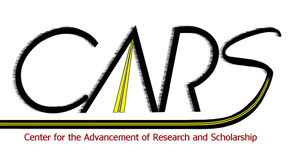A Multidisciplinary Lens
Location
Burnell 112
Start Time
15-5-2013 3:00 PM
End Time
15-5-2013 4:00 PM
Description
Bridgewater is Native Space
Joyce Rain Anderson
According to Janice Gould, every university in the country must acknowledge it has been built on what were once Native lands. Thus, as universities develop Indigenous courses, programming, and partnerships, we must consult with Native peoples and particular attention should be given to local peoples, texts, and makings all to bring awareness of Indigenous knowledge. Makings "are significant for understanding Native rhetorical traditions because they provoke, create, and prompt stories that tell us who we are in relation to one another . . . instructing us about our responsibilities to each other, and to the land" (Powell). My presentation demonstrates how in my Native studies courses, scholarship, university programming, and partnerships, I have been careful to honor relationships and work with Native peoples to re-situating themselves in institutions built upon their lands.
Stone Structures of the Eastern Seaboard: A Preliminary Overview
Curtiss Hoffman
Scattered through the woods and fields of the eastern seaboard of the US and Canada are large numbers of enigmatic stone constructions which have been the subject of controversy among archaeologists and antiquarians for many years. Recent evidence suggests that many of these may have been constructed for ritual purposes by Native Americans. This study presents preliminary evidence of over 3,000 of these structures obtained during and after my sabbatical semester in the Fall of 2012, and provides some initial impressions of their distribution and possible functions. A tour of the local site will follow the presentation.
A Multidisciplinary Lens
Burnell 112
Bridgewater is Native Space
Joyce Rain Anderson
According to Janice Gould, every university in the country must acknowledge it has been built on what were once Native lands. Thus, as universities develop Indigenous courses, programming, and partnerships, we must consult with Native peoples and particular attention should be given to local peoples, texts, and makings all to bring awareness of Indigenous knowledge. Makings "are significant for understanding Native rhetorical traditions because they provoke, create, and prompt stories that tell us who we are in relation to one another . . . instructing us about our responsibilities to each other, and to the land" (Powell). My presentation demonstrates how in my Native studies courses, scholarship, university programming, and partnerships, I have been careful to honor relationships and work with Native peoples to re-situating themselves in institutions built upon their lands.
Stone Structures of the Eastern Seaboard: A Preliminary Overview
Curtiss Hoffman
Scattered through the woods and fields of the eastern seaboard of the US and Canada are large numbers of enigmatic stone constructions which have been the subject of controversy among archaeologists and antiquarians for many years. Recent evidence suggests that many of these may have been constructed for ritual purposes by Native Americans. This study presents preliminary evidence of over 3,000 of these structures obtained during and after my sabbatical semester in the Fall of 2012, and provides some initial impressions of their distribution and possible functions. A tour of the local site will follow the presentation.
